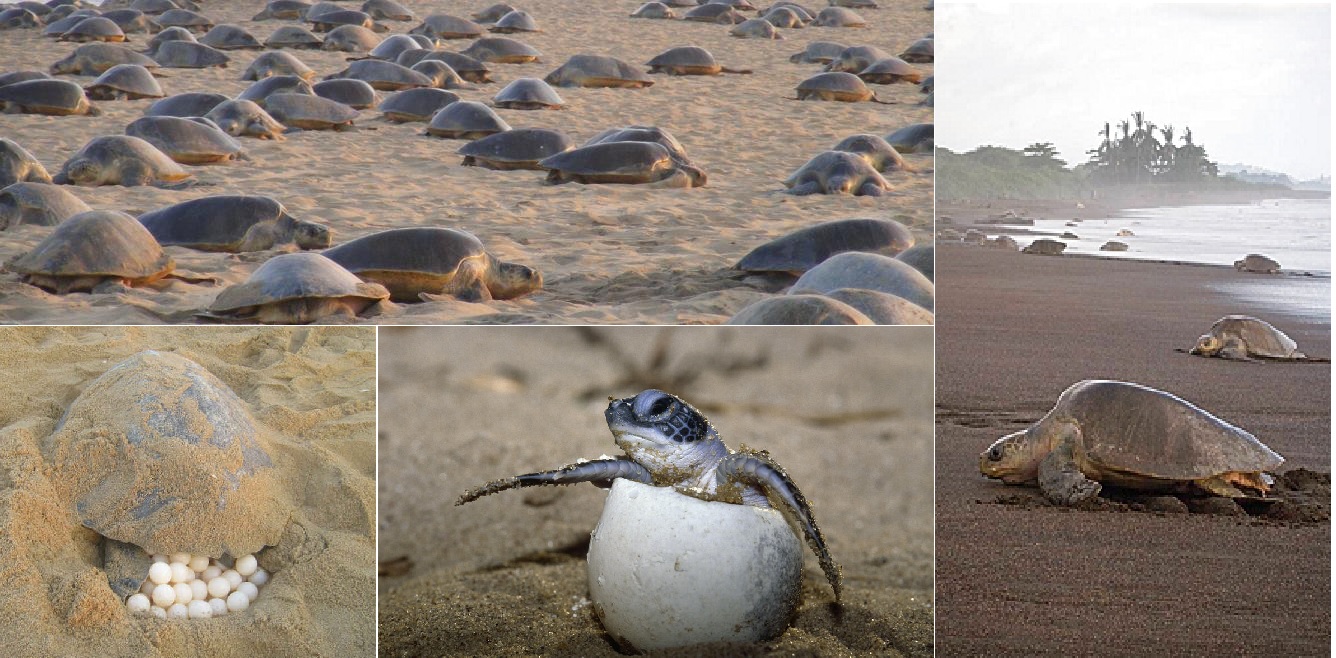The state's coastline hosts five species of marine turtles: Olive Ridley, Green, Leatherback, Hawksbill, and Loggerhead.

Olive Ridley is the second-smallest of all the sea turtle species that have been internationally categorized as a Vulnerable species (Creative Commons)
Some made a dash for the waves that were welcoming them to a whole new world. A few others were a bit hesitant and needed a nudge to embark on their new journey.
As the nesting season of Olive Ridley turtles came to a close, Tamil Nadu released over 1.83 lakh hatchlings into the sea. The number of hatchlings is the highest so far in the state.
The Tamil Nadu Forest Department had set up 35 hatcheries along the state coastal lines and collected more than 2.16 lakh eggs between December 2022 and May 2023.
The number of hatcheries, too, was the highest so far. In 2021-2022, 22 hatcheries were set up and 1.72 lakh hatchlings were released.
The department formed teams comprising officials, fishermen, conservators, and volunteers to protect the collected eggs by creating guarded hatching sites. Round-the-clock protection was given to hatcheries set along the coast of Chennai, Cuddalore, Nagapattinam, and Ramanathapuram districts.
Olive Ridley is the second-smallest of all sea turtle species that have been classified as “vulnerable”.
These turtles are listed in Schedule I of the Indian Wildlife (Protection) Act, 1972.
As we officially bid goodbye to the Turtle nesting season in Tamil Nadu, here is a update of the year. This year was really action packed and undoubtedly the best. We set up 35 turtle hatcheries and released 1,83,497 baby turtles. As these small ones take off to their epic… pic.twitter.com/PbYbt6pYe9
— Supriya Sahu IAS (@supriyasahuias) June 23, 2023
The Forest Department officials said maintaining the right temperature in the hatcheries is important, since this decides the gender of the hatchlings. The eggs won’t hatch if the temperature is over 35 degrees Celsius.
Officials said if the temperature is between 25 degrees and 30 degrees Celsius, more than 70 percent of hatchlings will be male and if the temperature is between 30 degrees and 35 degrees Celsius, more than 80 percent of the hatchlings will be female. If it is 34-35 degrees, all hatchlings will be females.
Usually, conservators maintain the temperature in such a way as to increase the number of female turtles.
Mature female Olive Ridleys are extremely sensitive to external disturbances, including lights, while laying eggs. The eggs will take 48-55 days to hatch.
Dr Supraja Dharini, the founder of the TREE Foundation, an NGO working towards turtle conservation, told South First that a female Olive Ridley lays 60-160 eggs, and conservators collect them. The eggs are then kept in incubators precisely in the manner in which the female turtle had laid the eggs.
“The nests were covered with bark husks of coconut trees, to retain the dew, prevent the sunlight, and maintain the ideal temperature,” she said.
She added the temperature in the hatcheries was regularly monitored using thermometers. Wet gunny sacks were also placed around the nests for keeping the temperature down.
Speaking to South First, Additional Chief Secretary Supriya Sahu said that focused attention on increasing the hatcheries made this achievement possible.
“The public participation and a dedicated conservation plan map enabled the department to achieve this. Apart from the Gulf of Mannar, where the natural hatchery process happens, we concentrated on the vulnerable areas like Chennai, coast of Nagapattinam and Cuddalore, and collected without missing any eggs” she said.
When asked about the progress on the Turtle Conservation Centre, Sahu said that a detailed project report has already been prepared.
“Designing activities are going on and the land for the centre has also been identified. We are expediting the project and will complete it soon,” Sahu said.
The Forest Department said the nesting of turtles was slow till mid-January, but picked up in February and March.
Dharini said they collected 11,873 eggs from the Chennai coast alone and released 11,444 hatchlings into the sea, with a hatchling rate of 96.39 percent.
From the Neelankarai to Alambarai fishing villages, they collected 47,818 eggs. of which 45,571 eggs hatched. In Chengalpattu coastal area, out of the 35,945 eggs collected, 34,127 hatchlings were released.
In the southern coastal line, which includes Thoothukudi, Ramanathapuram, and Kanniyakumari, there was a rise in nests this season.
Nearly 200 nests along the 25-km stretch between Arichalmunai and Dhanushkodi were found and the eggs were hatched at the MR Chathiram and Paradi hatcheries.
The Gulf of Mannar Marine National Park witnessed the highest number of Olive Ridleys this year.
The fishermen in the region were given Turtle Excluder Devices to prevent the turtles from getting caught in fishing nets or killed when they come to the surface to breathe.
In the islands in Palk Bay, eggs were collected with the help of fishermen and conservators.
On 25 April, 2022, the Tamil Nadu government announced in the Assembly the establishment of a Turtle Conservation and Rehabilitation Centre in Chennai at a cost of ₹6.3 crore to boost turtle conservation efforts.
The state’s long coastline hosts five species of marine turtles: Olive Ridley, Green, Leatherback, Hawksbill and Loggerhead turtles. The Olive Ridley species mostly nests along the coast.
The conservation centre involves fisherman communities and has facilities like a turtle pool and shed, in addition to medical facilities for rehabilitating rescued turtles will be established.
The centre is also expected to be a temporary home for sick and injured turtles before they return to their natural habitat.
The project is funded by the Tamil Nadu Pollution Control Board, and implemented by the chief wildlife warden.
The centre is also expected to take up campaigns to make fishermen communities aware of the necessity for protecting the Olive Ridley turtles.

May 18, 2024

May 18, 2024

May 16, 2024

May 16, 2024

May 16, 2024

May 16, 2024